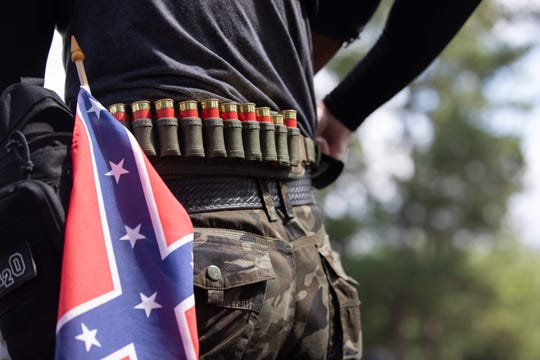
‘We are going to tackle this problem (of extremism) head on’: Adviser to secretary of Defense
You’re reading the Opposing View, one of two perspectives in Today’s Debate.
For Our View, read “Military must do more to weed out white supremacists, extremists.”
The vast majority of our men and women in uniform — and those civilians who support them — serve with honor, dignity and character as they defend our country. And we are grateful for their dedication to our core values, to the oath they all took.
But we are also rightly mindful that extremism in our ranks is real, and though we may not have a full grasp on the extent of the problem — specifically the number who espouse these beliefs — we know it can have an outsized effect on our force. It doesn’t take many to impair our morale, health and readiness.
A tear in the fabric of any institution usually starts small.
We know that extremist ideology is neither new to our country, nor our ranks. And while we have made progress over the years in combating this threat, the events of Jan. 6 at the U.S. Capitol underscore how much work remains.
In this file photo taken on August 15, 2020, a man, with ammunition and a confederate flag, takes part in far right militias and white pride organizations rally near Stone Mountain Park in Stone Mountain, Georgia. (Photo: LOGAN CYRUS/AFP via Getty Images)
Guided by Secretary of Defense Lloyd J. Austin’s leadership, the Defense Department is conducting a 60-day stand down at all levels to better understand the scope of the problem, reaffirm our oath of office, and equip service members with the tools to identify and report suspected or actual extremist behaviors.
Furthering this work, we will review current policies and procedures to better detect and identify extremist ideology. This includes working toward tighter background screening of potential recruits, standardizing reporting and data sharing with federal agency partners, and strengthening our Insider Threat program. We will be innovative and collaborative, working with our interagency colleagues to enhance our efforts.
We also need to better understand the degree to which individuals radicalize inside the force, and how we prepare future veterans for what — and who — may be waiting for them post-service. A study from the previous administration makes clear: Extremists target our troops, craving the leadership, weapons and organizational acumen they possess.
We are going to tackle this problem head on, making it an integral and intrinsic part of everything we do. In support of the secretary’s commitment, Deputy Secretary Kathleen Hicks recently established the Deputy’s Workforce Council to specifically address the department’s people management, personnel policy and total force requirements. We want a healthy, inclusive, law-abiding and, ultimately, extremism-free workforce.
Fundamentally, it comes down to good leadership — knowing our people, setting the right expectations and holding ourselves accountable to the sort of conduct and behavior the American people deserve to see from us.
Meeting these goals will take a whole-of-department effort. That work has begun, and will grow, over the coming months.
A tear in the fabric of any institution usually starts small. That’s why it’s so important to act quickly. And we are.
Bishop Garrison is a senior adviser to the secretary of Defense.
Source: Read Full Article
